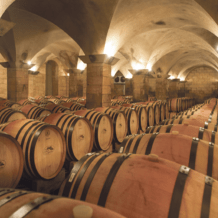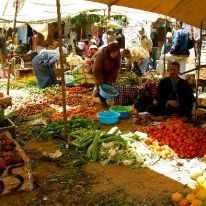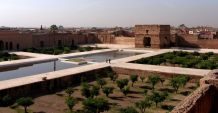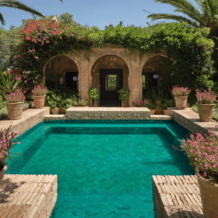
Morocco lies on the northwesterly tip of the African continent with a long Atlantic coast. This coast runs approximately southwest to northeast. Almost parallel to the coast, behind the fertile plains of Morocco’s principal rivers, are the Atlas Mountain ranges (from north to south, the Middle, High and Anti-Atlas). The Sahara desert begins in the foothills of these mountains on their eastern (interior) side. Sandwiched between the mountains and the Algerian border are the principle dune regions of Morocco. Further south, the Sahara meets the ocean where Sahara cities Laayoune and Ad Dakhla are known for their sandy dunes, unique flora, bird life and beaches.

Further south, and also reached via Ouarzazate (but this time via the beautiful Drâa Valley and its date palm oases and ancient defensive kasbahs) are the desert areas around Zagora and M’Hamid. At Zagora, you can see the famous sign indicating “TOMBOUCTOU 52 JOURS,” (“52 days to Timbuktu”), which gives an indication of the importance of the desert and this region in particular for the camel caravans and trade routes of the past. Today, Zagora is a popular starting point for trips on camelback into the Sahara. The landscape here is flatter, although there are dunes at Tinfo, and near the town agriculture is relatively well developed, giving a different desert experience.
Erg L’Houdi (meaning the Dunes of the Jews) and Erg Ezahaar (the Screaming Dunes) are respectively one or four days’ camel ride from M’Hamid, which is itself around 100km (60 miles) further along the Drâa Valley towards the Algerian border. The paved road ends here. M’Hamid feels much more like a nomadic outpost. Being much more remote, this area is considerably less visited and many of the local sites of interest, such as sacred springs, ancient zaouias (sites of religious pilgrimage in honour of saints) and local Berber and nomadic villages are more easily (and comfortably) accessed in a 4×4 vehicle with an experienced guide. Being such an important region for trade and artisans, the area between Zagora and M’Hamid features some interesting historical and cultural sites, such as the village of Amezrou – base of former Jewish silversmiths with an Ancient Jewish Mellah – and Tamagroute, with its pottery cooperative, zaouia and Koranic Library.

Many visitors to Morocco manage to fit in an overnight stay under canvas or in a Kasbah-style hotel at one of the main dunes areas of Erg Chebbi or Erg Chegaga. However, for the more adventurous or those wishing really to escape the distractions of the modern world, the trip down to south to Morocco’s Great Deserts and also to M’Hamid and beyond is certainly worthwhile. For those with less time, however, the larger dunes still offer the chance to get away from it all. And while a journey on camelback is certainly not the most luxurious in terms of comfort, it is unlike anything else! Climb aboard the “ship of the desert” and image the great trains of camels, which once crossed this magnificent sandy expanse, transporting gold, silver, and salt across the African continent!
For more information about Morocco’s Great Sahara Desert Tours





